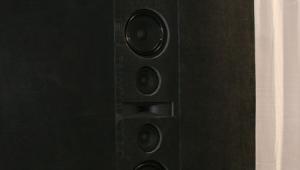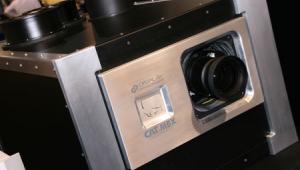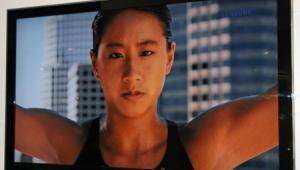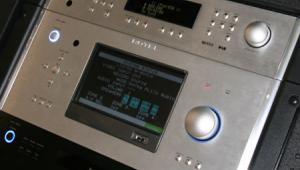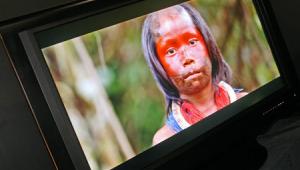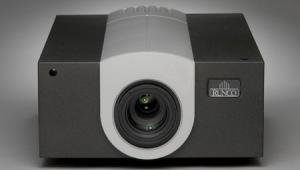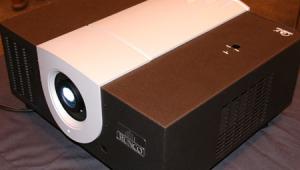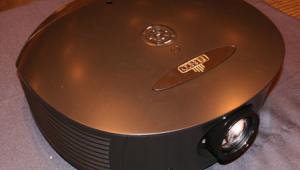CEDIA @ 20

As you might expect in a recessionary economy, attendance was way down over last year. The aisles were not nearly as crowded, and most of the major manufacturers had much smaller booths than in years past. Also, the aisles seemed to be wider, perhaps in an attempt to make the show look larger than it really was.
Still, there was a lot to cover, including a surprising number of technology-concept demonstrations with no soon-to-be-available products. The most impressive such demo for me was Pioneer's Project ET (also called E-Tap, both of which stand for Entertainment Tap, a confusing marketing miscue). The demo consisted of a box that's a Blu-ray/DVD/CD player, a home-network media server, and an online-content streamer with a very slick onscreen graphic user interface and flexible control options, including iPhone. The box houses a 1TB hard disk to store media files, including Blu-ray managed copies, an industry first. Advanced online shopping automatically retrieves any and all merchandise and content related to what you're watching or listening to, and you can automatically post a tweet about what you're enjoying along with a rating. This could finally be what "convergence" has been promising for years.
Another impressive tech-concept demo was Atlantic Technology's H-PAS (Hybrid Pressure Acceleration System), which uses a combination of horn-loading, transmission-line, bass-reflex, and acoustic-suspension techniques to extend the bass response of any woofer far below it's normal limits. The demo was very impressive, but no products were announced.
Bridging the gap between concept demos and real products was 3D. Some presentations were actual products, such as the JVC GD-463D10 LCD, various Mitsubishi RPTVs, and Digital Projection's Titan Reference 3D projector, while others were concept demos, such as the previously seen Panasonic system and a Sony LCD.
The Mits, Panasonic, and Sony systems use active-shutter glasses, which allows full 1080p resolution to reach each eye because the frames are alternated. Another advantage of this approach is that projectors don't need a special polarization-preserving screen. On the downside, active glasses require a compatible source device and IR emitter that syncs the shutters to the image.
By contrast, the JVC uses passive polarized glasses, which cuts the vertical resolution for each eye in half, except when used with two projectors as with Imax 3D. On the upside, the glasses are lighter and less expensive than the active kind. Digital Projection had two demos, one active and one passive; unfortunately, the active demo was having technical difficulties when I was there, so I can't make a valid comparison of the two.
Either way, the image looks quite dim because lots of light is lost passing through the glasses. Also, the 3D effect wasn't always completely convincing to my eyes. The Panasonic demo was the best I saw at the show; according to a rep in the booth, the company is working with the Blu-ray Disc Association on finalizing a 3D spec for Blu-ray, which will require HDMI 1.4 and should be done by the end of the year, with real products appearing sometime in 2010.
Most exciting for me was the proliferation of LED-illuminated, single-chip DLP front projectors. Four companies joined Vivitek in this arena, including Runco, Digital Projection, SIM2, and Projectiondesign. Pricing varied by a factor of two, and amazingly, the Runco was the least expensive of the bunch! This technology requires a completely light-controlled room because it outputs less light than conventional bulbs, but it eliminates the color wheel and its associated "rainbow artifacts." Also, there's no need to replace a bulb over the projector's entire lifetime, which was estimated at 30,000 to 100,000 hours. Finally, the colors and brightness remain much more constant over time than lamp-based projectors. I thought all the LED-based projectors looked fantastic, and I'm eager to get them into the studio for a more extended look.
And so I bid happy 20th anniversary and a fond farewell to the 2009 CEDIA Expoand a not-so-fond farewell to the Georgia World Congress Center. The show will return to Atlanta next year with an option for 2011, but I heard rumors that CEDIA got so many complaints about the venue, it will probably not exercise that option. I certainly hope soI don't think my feet can take two more years!
